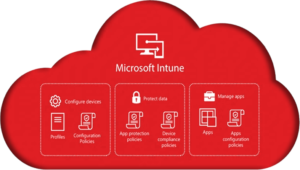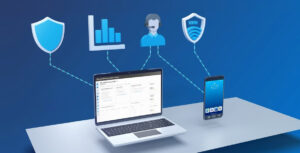This article will detail a method to allow users to select their computer from a list in the SCSM Web Portal. This method relies on primary user data from SCCM 2012. This list will be populated from this data. This can very handy in large environments with many machines and where a user can have more than one machine. This process could potentially save support personnel time when establishing what device is actually giving a user trouble. It also eliminates the extra step of establishing which computer the user is actually having trouble with.
There are probably ways to automatically pull the computer name of the computer where the incident is submitted. This is not always a good indication of the device with the issue, because if a device is truly malfunctioning, the user may not be able to submit the incident from that device.
SCCM Connector
First, I will go through the process of setting up the SCCM Connector in SCSM. This is vital part of this process, and the overall success of your Service Manager environment. The data contained in SCCM is so complete that the support staff can see what software is installed and what hardware the user is running down to the amount of memory and size of the hard drives. SCSM gathers all of this data from SCCM Asset Intelligence. Pretty much any information available from the SCCM Asset Intelligence reports is available directly from the SCSM console. (NOTE: Asset Intelligence does not have to be enabled for computer list to work)
To set up the connector, go to the “Administration” node of your Service Manager console and select “Connectors”. In the right column, select “Create Connector” and then “Configuration Manager connector”. Give your connector a name and click next. On the management pack screen, select your version of SCCM. If you do not have SCCM 2012, the rest of this article will not work, because there is no primary user in SCCM 2007.
On the next screen, type in the database information for your SCCM environment. You must open the SQL firewall port on your SCCM server. By default, this port is TCP 1433. If your SCCM database is in a named SQL instance (i.e. not the default instance), you must also open TCP 4022 so that the SCSM can find the instance name.
Next, fill in the “Run as” account information. I recommend creating a special AD service account for this. This account will need “public” access rights to your SCCM database. At this level, SCSM cannot modify anything in the database – it can only read.
Next, establish the collections that you want SCSM to import. If you want your entire environment, just select the “All Systems” collection. You do not need to worry about importing user collections because that is done with the AD connector.
Finally, establish the schedule that you want to use to sync the data from SCCM. I recommend doing this once a day during non-peak hours. After the connector is created, I recommend going ahead and manually executing a sync by clicking “Synchronize Now” in the right column.
Now that we have our SCCM connector set up, let’s move on to creating the service offering.
Service Offering
Now we need to create the service offering that will appear on our portal. To begin, select the “Library” node. Expand “Service Catalogs” and “Request Offerings”. Select “Create Request Offering” in the right column. Give this request offering a name such as “Pick Your Computer”. Click the “Select template” drop down and choose “Incident”. On the pop-up screen, just choose “Default Incident Template”. On the “User Prompts” screen, input the prompts you want to present to the end user. I have “Problem Description”, “Select Your Computer”, and “Contact Number”. Make all prompt types text except for “Select Your Computer”. It needs to be “Query Results”.
On the next screen (“Configure Prompts”) you will notice that we need to configure the “Select Your Computer” option. To do this, select that row and click “Configure”. Change the drop down that reads “Frequently used basic classes” to “Combination classes”. Select the “Computer (advanced)” option.
Next, move to the “Configuration Criteria” tab. Click “Primary User”, select the “User Name” constraint at the bottom, and click “Add Constraint”. Next, click the “Set Token” option and select “Token: Portal User Name”. Finally, change “contains” to “equals”.
Next, jump to the “Display Columns” tab. For this screen, simply check the “Display Name” box. You can also add any other field here that you want. This is the information that will be displayed in the portal to the end user. I also selected IP Address.
Finally, under the “Options” tab, determine whether or not you want the user to be able to select multiple items. I do, because I realize that if a user is having issues with email, for example, it could be happening on more than one device. Next, check the box next to “Allow user-selected objects to template object as affected configuration items”. Select OK to save the query.
Next, on the “Map Prompts” node, map your prompts to their appropriate property. Do not map the computer name property to anything. It will be done automatically. Add a knowledge article on the next screen if you want. Finally, we want to publish our request offering. Change the “Offering Status” box to “Publish and press “Create”.
Now, to actually get the request offering to show in the portal, we must add it a service offering. To do this, open up a current service offering (or create a new one) and add the request offering we just made to the “Request Offering” node.
Now when you log into the portal and select the request offering you should get something that looks like this:
When I view the incident in the Service Manager console, the computer is automatically added as an “Affected Item”.





